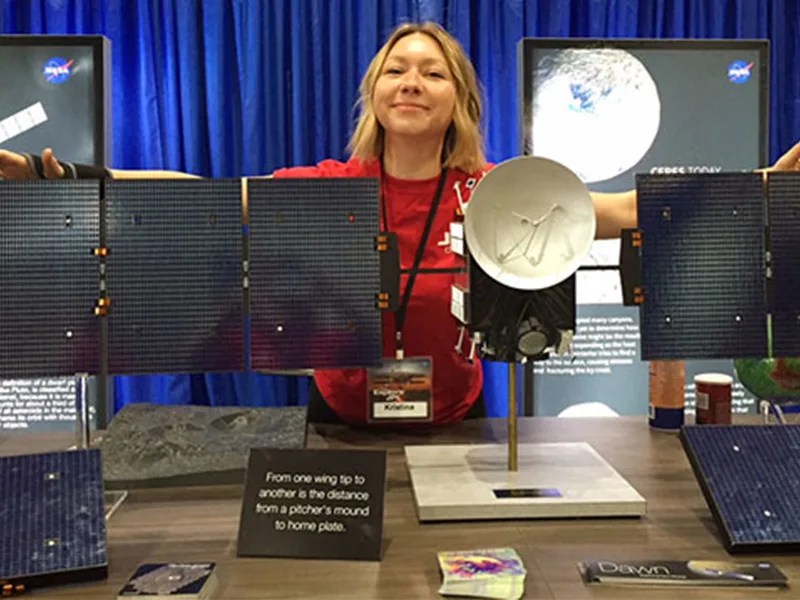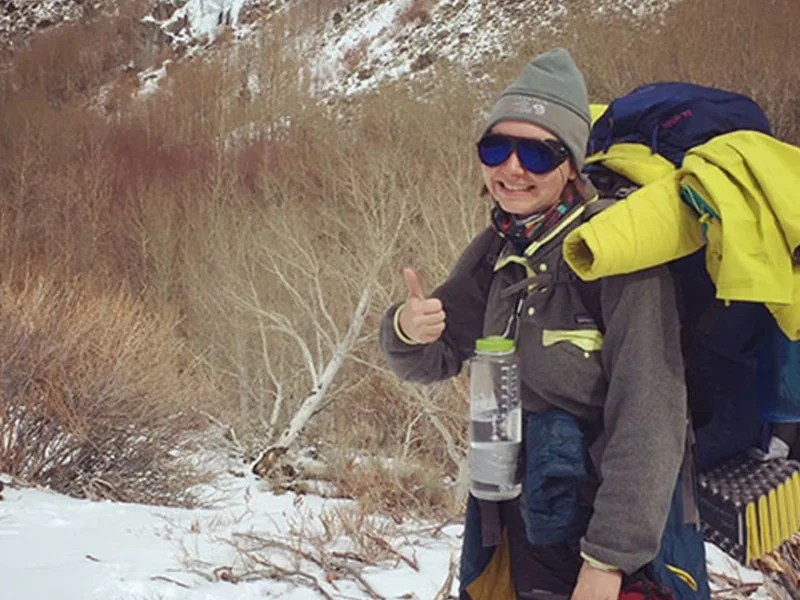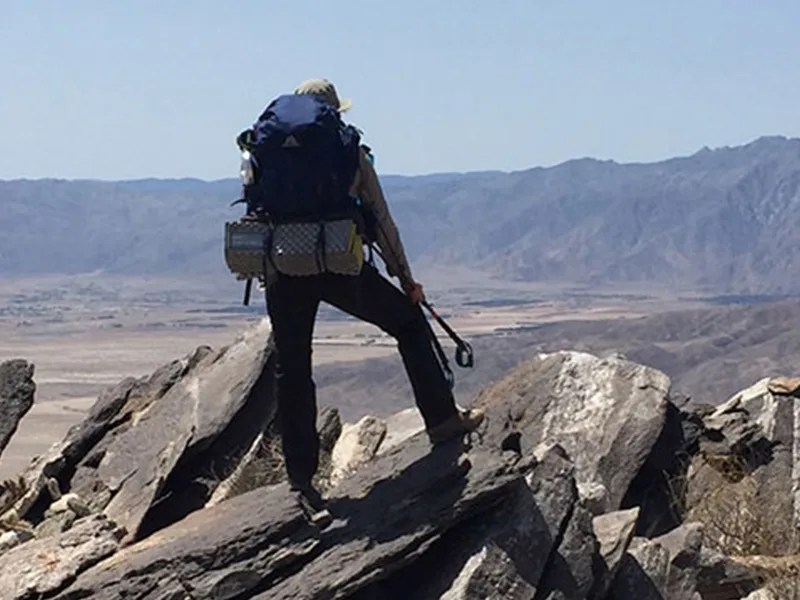4 min read
The pins on Kristina Larson’s JPL lanyard clink against the edge of her desk as she leans forward to grab her water bottle. The R2D2, Dawn, and national parks pins stand out. Her computer is framed by a toy dinosaur breaking out of a plaster egg on the right and a jar of almond butter on the left. She sits between the two, working away.
Kristina is the lead systems engineer for Dawn at NASA’s Jet Propulsion Laboratory. As she explains it, she leads a team of systems engineers, who run the spacecraft’s various instruments and operations, in managing the sequencing (code) of the spacecraft and coordinating between the different subsystems. Overall, her job is to make sure there are no conflicts between the activities of each subsystem and to monitor the spacecraft’s activities for anomalies.
She breaks tasks into three categories: uplink (information sent up to the spacecraft), downlink (information the spacecraft sends back), and anomaly response. On the uplink side, the team is in charge of the spacecraft’s background sequences, code that governs the spacecraft’s basic functions, and participates in science and navigation planning. The sequences need to be reviewed and code for any new activities must be tested in the testbed, a room of computers with software matching the spacecraft’s. Then, Kristina will sit on console in the mission support area (MSA) as the commands are sent to the spacecraft. For downlink, the systems team members take turns being on call.
Kristina is the lucky team member today. As her phone sits on her desk with its ringer on the maximum volume, she explains that for the next day she’ll be the one alerted of any problems with the spacecraft. “Most of the time,” she says, “[these alerts] are just due to station issues, like a transmitter going down.” On the occasion that there is an issue with the spacecraft itself, she must alert the mission manager and the leaders of any systems involved. Even if it’s the middle of the night, together they review the data to diagnose the problem and coordinate subsystem responses.
Despite being on call and occasionally having to wake up her team members at three o’clock in the morning to address (thankfully infrequent) spacecraft anomalies, she loves that she gets to “explore worlds that were truly new to us. As a body grows by pixel in images as you approach, you really feel like a space explorer.”
Though Kristina started working on Dawn in 2008 as an intern, she’s also ventured beyond the mission. Having worked on operations for the Mars rover Opportunity, she’s now becoming involved with mission development on NASA’s Psyche mission, which will be exploring an asteroid called Psyche in the 2020s, and a separate concept for a mission to return samples from Mars. On Psyche, she ensures that the mission design takes future operations into account, making them as efficient as possible. And on Mars Sample Return, she worked on a concept formulation team to review different concepts and designs for a proposed Mars Sample Return mission.
Though she studied aerospace engineering in college, one doesn’t gain this type of hands-on operations and development experience in school. As she became more experienced with the people and operations on Dawn, she became more comfortable in that setting. However, she says, starting work on Opportunity, which has been exploring the surface of Mars since 2004, was daunting. She worried about her ability to operate a rover, a very different beast than Dawn’s ion-propelled orbiter. Though initially intimidated by the unfamiliarity of it, she threw herself into the challenge, and after her first new project, she was much more comfortable transitioning to new work. She says, “Now it’s one of the things that I like most about JPL. You always have opportunities to expand your experience base and work on new and exciting projects.”
When she isn’t operating spacecraft or helping to develop new missions, Kristina is also an avid hiker, rock climber and flutist. She loves “exploring new trails, finding new views, getting dirty, figuring out new backpacking recipes, and sleeping next to lakes.” It’s no wonder her ambitious, adventurous nature also carries over into her hobbies. As Kristina puts it, she’s “always looking for a challenge.” In college, she pursued aerospace engineering, a difficult field in a male-dominated setting. At JPL, she pushes herself beyond the comfort of her realm of experience. And at home, she climbs mountains.










